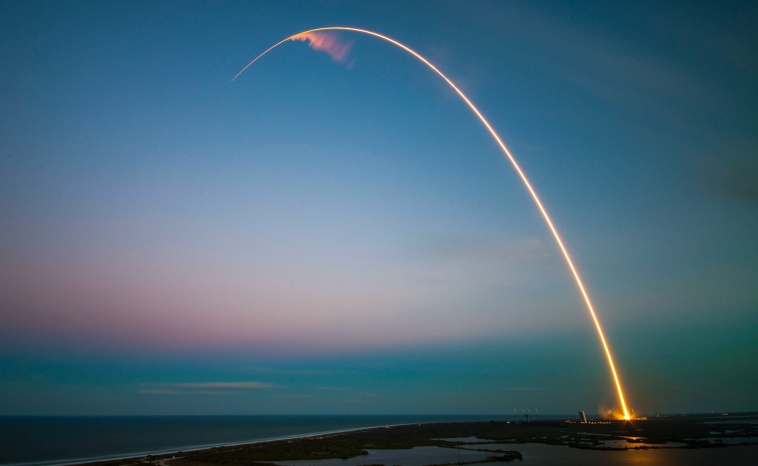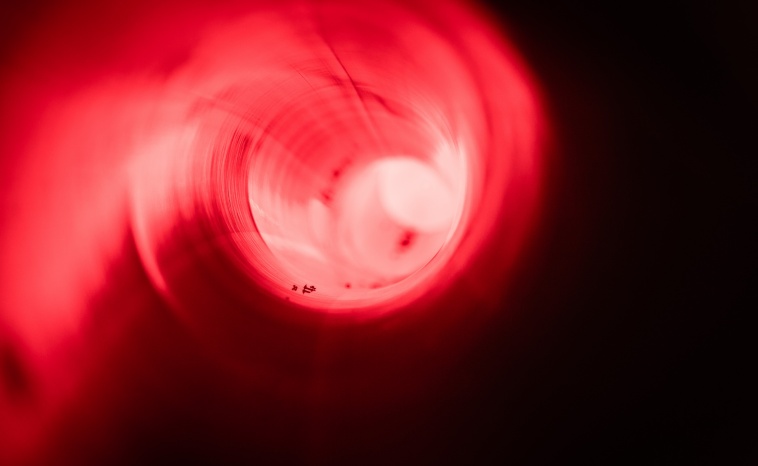Will Light-Speed Travel Ever Become a Reality?

The concept of light-speed travel has long fascinated scientists, dreamers, and science fiction writers alike. But will faster-than-light travel ever become a reality? In this article, we’ll take a closer look at the concept, exploring the science behind the idea, the challenges and limitations behind travelling at such speeds, and the potential impact and opportunities faster-than-light travel could offer.
Light is the fastest thing in the universe. It travels at a speed of approximately 299,792 kilometres per second in a vacuum. That’s fast enough to circle the Earth about seven and a half times in just one second. The concept of light-speed travel revolves around the idea of moving at this incredible speed, or even faster. Imagine traversing the 238,855 miles to the moon in a little over a second. Or reaching the nearest star system, Alpha Centauri, a mere 4.3 light-years away, in just over four years instead of the tens of thousands of years it would take using conventional propulsion methods.
However, achieving such speeds is far more complex and challenging. Our understanding of physics, as it currently stands, imposes some significant barriers to the concept of faster-than-light travel.
- The Physics of Faster-Than-Light Travel
- Historical Perspective on Faster-Than-Light Theories
- Current Scientific Understanding of What Travels Faster Than Light
- Theories and Concepts: Can Anything Travel Faster Than Light?
- Is it Possible to Travel Faster Than Light: The Scientific Challenges
- Possible Solutions for Light-Speed Travel
- The Impact of Light-Speed Travel on Space Exploration
- Debunking Myths Around Light-Speed Travel
- The Future of Light-Speed Travel: Will it Ever Become Reality?
- The Journey Towards Light-Speed Travel
The Physics of Faster-Than-Light Travel

Albert Einstein’s Theory of Relativity largely governs the physics of faster-than-light travel. According to Einstein’s famous equation, E=mc2, as an object with mass accelerates towards the speed of light, its energy requirements increase exponentially. Essentially, the closer you get to the speed of light, the more energy you need.
At the speed of light, this equation implies that an object’s mass would become infinite, and so would the energy required to keep it moving. This is a significant barrier to faster-than-light travel. Our current understanding of physics states that nothing with mass can reach, let alone exceed, the speed of light.
However, physics is not a stagnant field. Theories evolve, discoveries are made, and our understanding of the universe deepens. Is there room within the framework of contemporary physics for faster-than-light travel? That is a question many scientists are working to answer.
Historical Perspective on Faster-Than-Light Theories
The idea of light-speed travel is not a new one. Historically, various theories have been proposed that suggest the possibility of exceeding the speed of light. In the early 20th century, for example, German physicist Arnold Sommerfeld suggested that electrons might be able to travel faster than light under certain conditions. However, his theories were ultimately proven incorrect.
In the 1960s, physicist Gerald Feinberg proposed the existence of “tachyons”, hypothetical particles that could travel faster than light. While intriguing, evidence of tachyons has yet to be found, and the mainstream scientific community largely considers them a mathematical oddity rather than a viable faster-than-light travel concept.
More recently, in the late 1990s, physicist Miguel Alcubierre proposed the concept of a “warp drive” that could theoretically allow for faster-than-light travel by distorting spacetime around a spacecraft. While the Alcubierre drive remains purely theoretical and faces significant practical and theoretical challenges, it has revitalised interest in the possibility of faster-than-light travel.
Current Scientific Understanding of What Travels Faster Than Light
Currently, our understanding of what travels faster than light is limited. As per Einstein’s Theory of Relativity, nothing with mass can reach or exceed the speed of light. This includes all known particles, such as electrons, protons, and neutrinos.
However, some phenomena in the universe appear to move faster than light. For example, the universe’s expansion exceeds the speed of light. This doesn’t mean that galaxies are moving through space faster than light, but that space itself is expanding, carrying galaxies.
In addition, certain quantum phenomena also seem to allow for faster-than-light interactions. Quantum entanglement, a phenomenon in which particles become linked and can affect each other instantaneously over vast distances, appears to involve faster-than-light communication. However, this doesn’t mean that information can be transmitted faster than light, as the entangled particle states’ changes are random and can’t be controlled or predicted.
Theories and Concepts: Can Anything Travel Faster Than Light?

The big question that has challenged scientists for years is: Can anything travel faster than light? While our current understanding of physics suggests that the answer is no, some theories and concepts hint at the possibility.
One such concept is the aforementioned Alcubierre drive. This theoretical model proposes a faster-than-light travel method involving distorting spacetime around a spacecraft. The ship itself would remain stationary within a “warp bubble”. In contrast, spacetime outside the bubble would be expanded behind the ship and contracted in front of it, effectively moving the ship faster than light. While this concept remains purely theoretical and has significant practical hurdles to overcome, it presents an intriguing possibility.
Another concept involves wormholes, shortcuts through spacetime that could allow for faster-than-light travel. However, the existence of wormholes is purely theoretical, and even if they do exist, they may not be stable or large enough to allow for the passage of a spacecraft.
Is it Possible to Travel Faster Than Light: The Scientific Challenges
The possibility of faster-than-light travel is fraught with scientific challenges. As mentioned, the energy requirements to accelerate an object with mass towards the speed of light are immense, as per Einstein’s Theory of Relativity.
Furthermore, even if we could find a way to overcome these energy requirements, there are other significant challenges to consider. For instance, time dilation becomes a substantial issue at speeds approaching the speed of light. According to the Theory of Relativity, time moves slower for an object moving close to the speed of light compared to an object at rest. This means that while only a few years might pass for the crew of a spaceship travelling at near-light speeds, decades or even centuries could pass on Earth.
Another challenge is the potential for catastrophic collisions. Even microscopic dust particles could have devastating impacts at near-light speeds due to their high relative velocity.
Possible Solutions for Light-Speed Travel

Despite these challenges, scientists are still working on the possibility of faster-than-light travel. A potential solution involves the manipulation of dark energy. Dark energy is a mysterious force that scientists believe is responsible for the universe’s accelerated expansion. If we could harness and control dark energy, we could use it to propel a spaceship faster than light.
Quantum mechanics also presents some potential solutions. For instance, the concept of quantum tunnelling, in which particles can “tunnel” through barriers that would be impassable under classical physics, could potentially have applications for faster-than-light travel. However, this idea is purely speculative and faces numerous theoretical and practical challenges.
The Impact of Light-Speed Travel on Space Exploration
If we could achieve light-speed travel, the impact on space exploration would be profound. With the ability to travel faster than light, we could reach distant star systems in a matter of years rather than tens of thousands of years. This would open up the entire galaxy, and potentially even other galaxies, to exploration and possibly colonisation.
Furthermore, faster-than-light travel could allow the study of ancient light from distant stars and galaxies, providing invaluable insights into the early universe. It could also potentially allow for the direct observation of exoplanets, enabling us to study these distant worlds in unprecedented detail.
Debunking Myths Around Light-Speed Travel
Despite the scientific challenges and our current understanding of physics, many myths and misconceptions exist about faster-than-light travel. One common myth is that faster-than-light travel would allow for time travel. While it’s true that time dilation occurs at speeds close to the speed of light, this doesn’t mean that faster-than-light travel would enable time travel. The relationship between speed and time is not linear, and exceeding the speed of light wouldn’t result in travelling back in time.
Another common myth is that nothing can travel faster than light. While it’s true that no known particles can reach or exceed the speed of light, there are phenomena in the universe that appear to move faster than light, such as the expansion of the universe itself.
The Future of Light-Speed Travel: Will it Ever Become Reality?

So, will faster-than-light travel ever become a reality? The truth is, we don’t know. While our current understanding of physics suggests that light-speed travel is impossible, science is always evolving. New theories are proposed, discoveries are made, and our understanding of the universe deepens.
We know the quest for faster-than-light travel will continue to drive scientific exploration and discovery. Whether or not we ever achieve faster-than-light travel, the journey towards it will undoubtedly yield invaluable insights into the nature of our universe.
The Journey Towards Light-Speed Travel
The journey towards faster-than-light travel is a complex and challenging one. Our current understanding of physics presents significant barriers to achieving faster-than-light travel, but we should still hold onto the possibility.
The quest for light-speed travel is about more than just the destination. It’s about pushing the boundaries of science and technology, expanding our understanding of the universe, and daring to dream about what might be possible.
Even if we never achieve faster-than-light travel, the journey towards it will undoubtedly yield invaluable insights and discoveries. And who knows? Maybe one day, we will find a way to travel beyond the stars at the speed of light!
We can’t travel to the stars just yet, but we can still enjoy their beauty from right here on Earth! With the OSR’s One Million Stars App, you can explore the galaxy and learn more about some of its notable stars.

